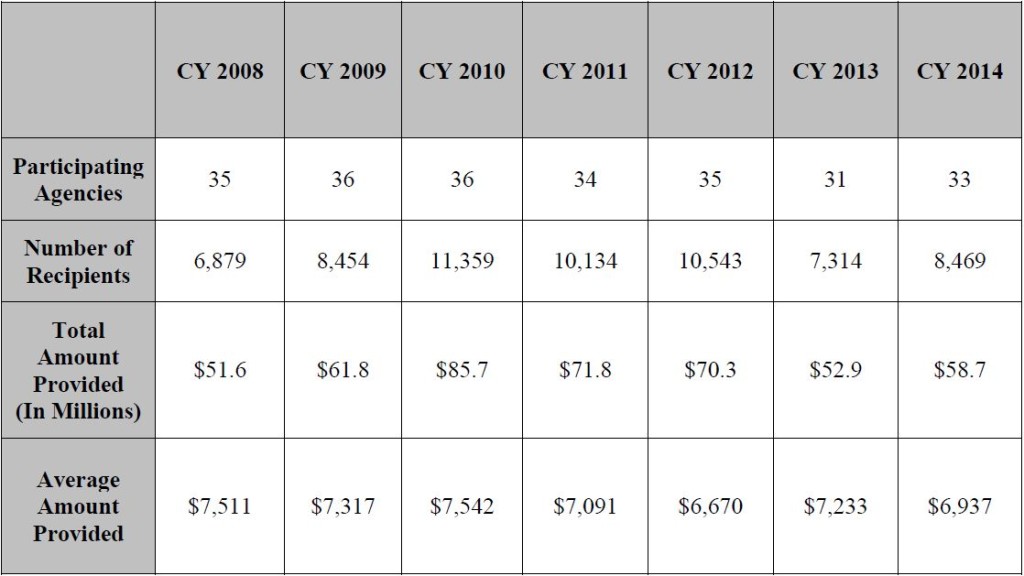Feds realize value in loan repayments, but agencies worry it’s not enough
More agencies utilized the federal student loan repayment program in fiscal 2014 to recruit and retain mission-critical employees than the year before. Funding ...
Most agencies are happy with the federal student loan repayment program and the incentives it gives them to recruit and retain mission-critical talent, but they’re worried how long those incentives will last as funding drops and student debt rises.
Thirty-three agencies handed out $58.7 million in loan benefits in fiscal 2014 — 11 percent more than the $52.9 million in payments 31 agencies made in 2013, according to the Office of Personnel Management’s annual report to Congress. Agencies provided loan benefits to 8,469 employees in 2014, up from 7,314 employees the year before.
But participating employees received slightly less in 2014 than previous years. The average loan repayment was $6,937 in 2014, compared with $7,233 in 2013.
Under the program, agencies can make student loan payments for a qualified employee of up to $10,000 a year, with a total maximum of $60,000 per individual. In exchange, employees promise to stay at the agency for at least three years. OPM, which facilitates the program, sees it as an incentive for agencies to recruit and retain employees.
Five agencies — the departments of State, Defense, Justice, Veterans Affairs, and the Securities and Exchange Commission — employed more than 79 percent of all student loan repayment recipients.
Nine agencies have loan repayment programs but did not use them in 2014, the report said.
Many agencies told OPM the program is helpful in recruiting employees in science, technology engineering and math (STEM) positions.
DoD, for example, handed out benefits to 578 of its employees in engineering jobs.
“The student loan repayment program has proven to be a significant recruitment tool for bringing interns into entry level training positions, and critical fields like engineering and nursing,” OPM noted. “Defense also reported that the program has proven very effective, as evidenced by the number of inquiries they have received at job fairs at colleges and universities.”
The Interior Department said it made the most repayments to employees in engineering positions and told OPM the program has been “particularly helpful with filling mission-critical occupations which include petroleum engineers, environmental scientists, natural resource specialists, geophysicists, geologists and biologists.”
The Defense Nuclear Facilities Safety Board said 71 percent of student loan recipients stayed longer than the required three years. It also told OPM the program helps the board compete with the private sector for talented engineers.
“The board’s success in remaining competitive with these entities depends on its ability to use all of the recruitment incentives at its disposal, including student loan repayment benefits,” the report said.
In its report, OPM said it wants agencies to establish metrics to demonstrate specific value agencies are gaining from the program. Specifically, it suggested agencies compare retention rates for employees who receive loan benefits with retention rates for employees who do not.
“OPM will continue to work with agencies to assist them in strategically using student loan repayment benefits, as well as other existing recruitment and retention tools, as necessary, to attract and retain employees to support agency mission and program needs,” acting OPM Director Beth Cobert wrote.
Student debts rises, federal funding falls
Agencies have seen a steady drop in funding for the repayment program since 2011, which many told OPM is the main barrier in using loan repayments and will likely continue to be one in the future.
Funding for the program reached its peak in 2010, when agencies had $85.7 million to spend on 11,359 recipients. Agencies saw a steady decline in funding every year since, but spending did rebound slightly in 2014 after the previous year’s annual low of $52.9 million.
Funding for an agency’s individual loan repayment program depends on that organization’s annual appropriations.

Other agencies said they’ve heard concerns about tax liabilities associated with the program, which one agency said “dilutes the actual value of the incentive.
Rising student debt levels are another problem, another agency told OPM. Some departments have said the $10,000 annual limitation on the loan repayment also diminishes the value of the program.
And some agencies found issue with the three-year service requirement.
“Others have reported that some job candidates or current employees are uncomfortable committing to a minimum three-year period of service in return for student loan repayment benefits,” OPM said.
Copyright © 2024 Federal News Network. All rights reserved. This website is not intended for users located within the European Economic Area.
Nicole Ogrysko is a reporter for Federal News Network focusing on the federal workforce and federal pay and benefits.
Follow @nogryskoWFED



